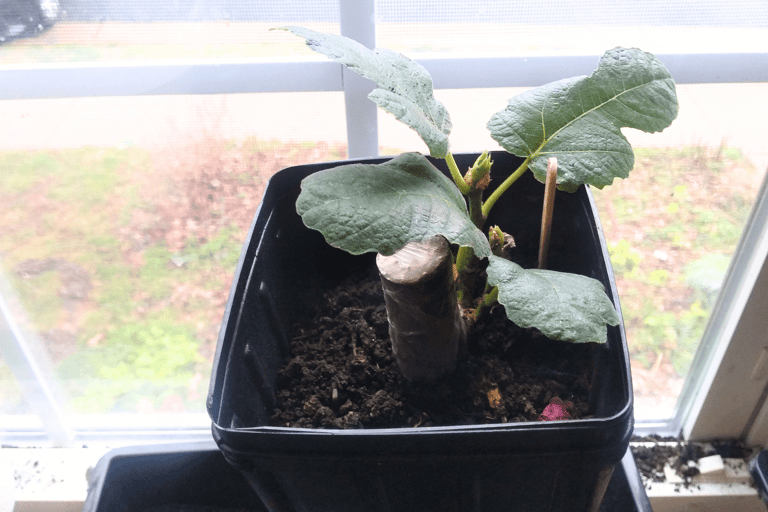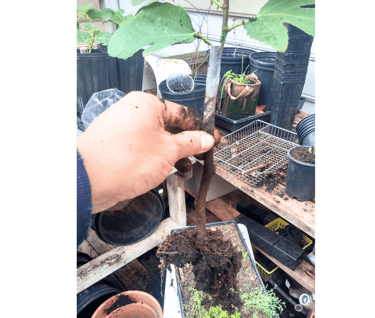How to Grow Fig Trees from Cuttings
Did you know that you can grow your own fig trees from branch cuttings? Here are three simple steps that show you how to do it successfully.
9/6/20235 min read
How to Grow Fig Trees from Cuttings
Disclaimer
This How to Grow Fig Trees from Cuttings article may contain some affiliate links. The small commission we receive if you choose to purchase goes towards making this gardening education available for free! We do not affiliate for anything we do not personally use. Thanks so much for your support!
Rooting figs from cuttings is simple and rewarding.

How to Grow Fig Trees from Cuttings
3 Steps for Rooting Success
Wondering how to grow figs from fig tree cuttings? Look no further. Below we explain how to:
Prepare Your Fig Cuttings
Root Your Fig Cuttings and
Transplant Your Fig Cuttings
1. Prepare Your Fig Cuttings
Rooting Figs is best done in Winter
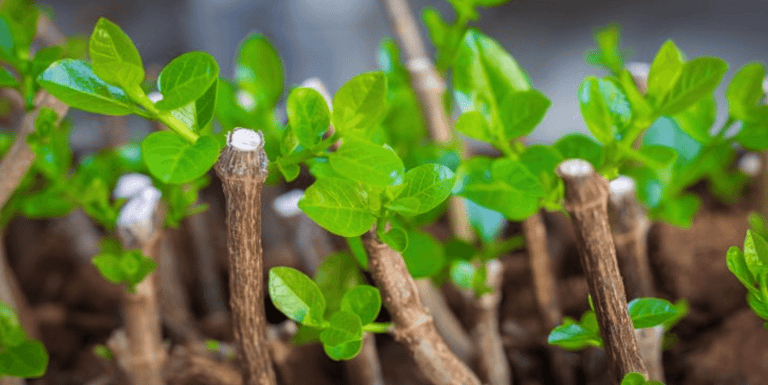

Winter Rooting
Although you can root fig cuttings year-round and even take "green cuttings" to root in the summer, the lazy way to rooting your fig trees is to do it working with the natural seasons, and that would mean taking branches or "cuttings" in the late fall to winter time when the fig tree is dormant. Cut young branches off of a living fig tree in the fall when its leaves have fallen. The best cuttings in our experience are thicker than a pencil size and still green on the inside.
Check out the video at the top of this page to see what we mean.
Materials
Branches from Fig Trees
Soil - half leaf-mulch compost and half native topsoil.
A saucer for the pot to contain
Grafting knife (or very sharp knife like a whittling knife)
Identify the top and bottom of the cutting (buds will point up).
Trim off a small part of the bottom of the cutting with a sharp knife to stimulate rooting.
Wrap the top of the cutting with parafilm by stretching it and wrapping it all the way around the stem to prevent it from drying out.
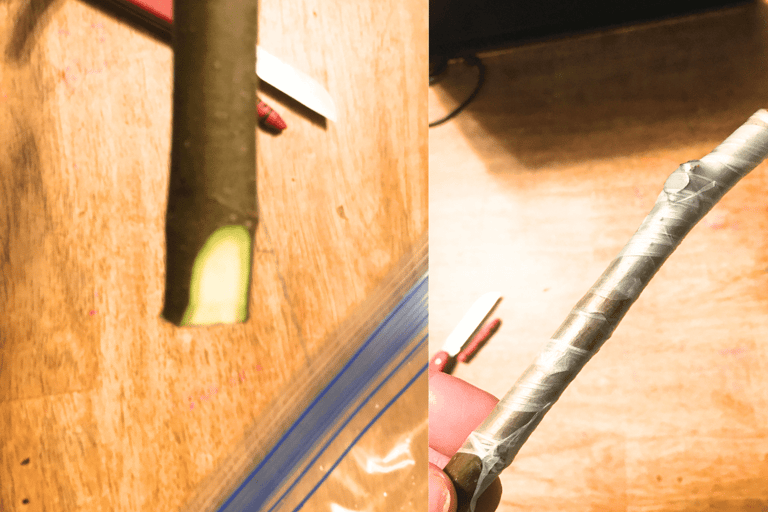

Directions
A rooted fig cutting leafs out in a tree pot
Transplant to maximize growing space.
Fill the tree pot up to the top with soil and stick the cutting into the soil with only the parafilm-covered part above the soil.
Water as you would seedlings, once per day for the first week, and once every other day after the first week.
After a few weeks, you will start to get leaves. They will poke through the parafilm
2. Root Your Fig Cuttings
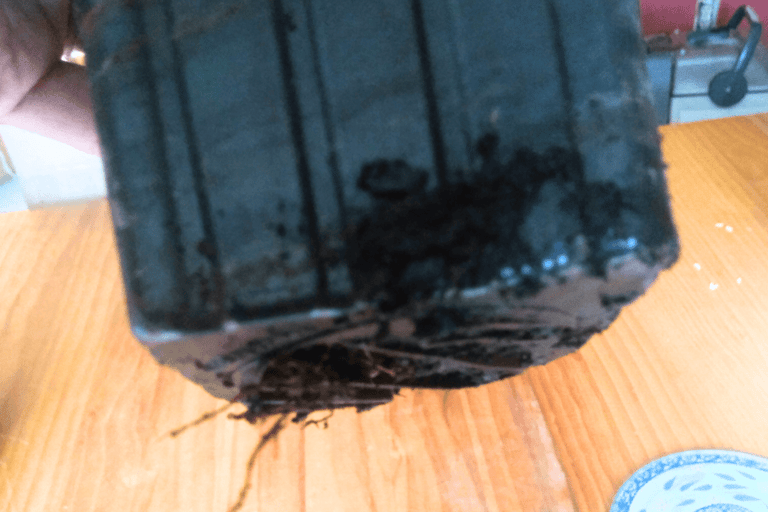

Make sure your pot has holes at the bottom.
Transplant when your seedling has its two "true leaves."
How to Transplant Your Fig
3. Transplant Your Fig Cuttings
Roots should start forming about one to two months after planting your cutting.
Once you are sure of your plant's root development, you can transplant your baby fig to a container or outside, weather permitting.
PLEASE NOTE: Roots are very fragile at this stage, so take your time to very gradually loosen the roots so they don't break off.
Transplanting Tips:
If you plan on growing your fig tree outside, make sure you plant it at the latest in early September to allow the plant time to lay down some roots before the fall weather kicks in. If you are growing in containers see the specific instructions below.
OUTSIDE PLANTINGWhen you transplant, make sure that you don't just dig a hole for the fig but also loosen the soil around the hole. Fig trees have shallow roots that will readily extend, but only if the soil is well-drained and loose.
Once your fig is established, you will not need to take any additional steps to overwinter except for the first year where we need to keep the roots warm. Make sure you pile extra compost and mulch over the roots in the late fall, around November. Then wrap the main stem with an insulating fabric, either plastic or a throwaway blanket.
Most figs are cold-hardy down to 15F and once established can survive even colder temperatures but their root systems need 1 year to fully extend into the ground to survive the harshest winter temperatures.
CONTAINER PLANTING
Figs are fairly easy to grow indoors. Just make sure that your pot is well drained and is large enough to allow the fig to grow and extend its roots the first year. Figs don't like very wet soil but enjoy regular deep watering once a week.
After the first year, your fig tree will need aggressive pruning to keep it from overwhelming your container. Container figs can reliably grow breba crops on second-year branch growth. Try to remove any side shoots and limit main branch stems to 3 or 4.
Figaholics.com - January 15 only
I don't have a fig tree nearby. Where can I order fig cuttings?
FAQs
Help, my fig cutting didn't leaf out!
If after a month you still do not see any growth in your fig whether in the roots or shoots, then you would likely have to try again. Refer to the video at the top of this page to see how tightly that parafilm is wrapped.
This time make sure that your cutting's top is covered in parafilm so that it doesn't dry out. Keep your soil moist but not damp.
What grows well with my fig?
There are many players that can support figs as companion plants. In permaculture, we call this a "Plant Guild."
Here's a short video about Plant Guilds. A future blog is coming soon!


Our SAGE garden planning app allows you to plan & design your food garden so you don’t waste hours wondering what to plant and when to plant it!
Dig Deeper
"AI, make a permaculture guild for my fig tree."
We've got something better than hit-or-miss bot recommendations. We are developing an app that can help you figure out what to grow with your fig, and much more!
It's called SAGE: a permaculture garden design app.
I WANT TO GROW MORE
Sign Up for a
Permaculture Garden Course
I AM A BEGINNER
I WANT MY DREAM GARDEN
Sign up for the
Grow-It-Yourself Program
Everything you need to start a garden
may be hidden in your pantry.
Take a self-paced, step-by-step garden course to help you grow right from seed to harvest.
Make Your Organic Food Garden A Reality with
a garden mentor
a community
an app &
a proven plan!



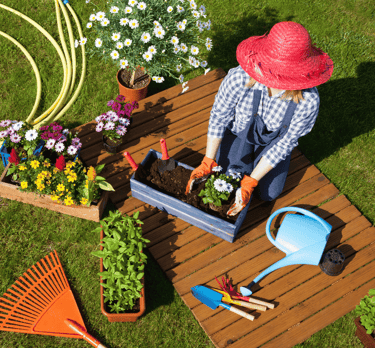


Choose one next step.
Which of the following are you?
Permaculture Gardens - your online resource for organic & sustainable gardens.
Contact
permaculturegardens@gmail.com
Bethany Farm
41558 Stumptown Rd.,
Leesburg, VA 20176

